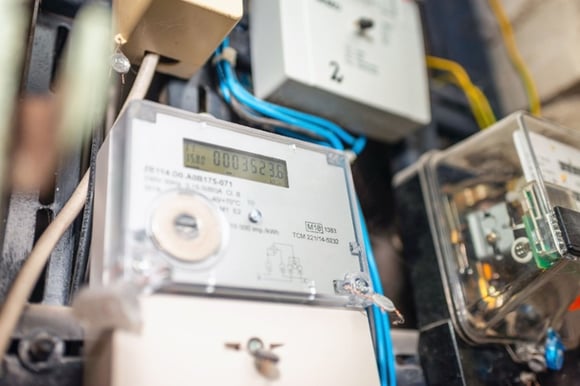.jpg?height=480&name=Untitled%20design%20(5).jpg)
Smart Building IoT Solutions
Optimize your smart building IoT operations
Minimize risk and maximize uptime with redundant IoT connectivity—keeping your smart buildings operational and interconnected, worldwide.
Use cases in smart building management
/Industry/Smart%20Building/emnify-smart-building_bottom.jpg?width=1080&name=emnify-smart-building_bottom.jpg)
/Industry/Smart%20Building/emnify-smart-building.jpg?width=1080&name=emnify-smart-building.jpg)
Why companies choose emnify
SKU management with a single SIM
Device manufacturers can streamline their SKU management and reduce operational expenses by utilizing a single SIM solution that connects to networks worldwide, enabling global device deployment with ease.
Maximize device uptime
Enjoy unrivaled uptime with automatic network switching to the best available option, including groundbreaking cellular and satellite connectivity, ensuring continuous service for your devices.
Scale faster
Rapidly scale your IoT operations with single APN setup, central control for SIM management, and the ability to perform bulk actions on up to 500 SIMs, streamlining your expansion.
Harness new technologies
Seamlessly integrate new technologies with the emnify IoT eSIM, offering global network access, reliable OTA updates, and compatibility with the latest advancements like 5G and satellite.
Lower IoT connectivity operational costs
Significantly reduce operational costs with a single SIM solution providing access to 540+ networks, minimizing the complexities and expenses of managing multiple contracts and operators.
Flexible IoT connectivity
Adapt to every opportunity with dynamic, customizable plans tailored to your project needs and regional requirements, ensuring contractual flexibility to meet evolving demands.
Global IoT connectivity for smart buildings
Get reliable connectivity for your smart building with the emnify SuperNetwork.
Spanning 540+ networks across 180+ countries, it includes even the most remote areas, thanks to our integrated cellular and satellite technology.
The SuperNetwork is ideal for applications demanding consistent and wide-reaching coverage.
Should your primary network encounter issues, the SuperNetwork automatically switches to a different provider, ensuring your smart building is never dependent on a single network’s performance.
.jpg?width=1080&name=IoT%20Security%20In-Text%20Visual%201%20(2).jpg)
Streamlined management for your IoT smart building
Simplify your smart building operations with our intuitive platform that scales with your business. Manage all connected devices from a single interface regardless of their network.
Automate SIM lifecycle management across any number of devices with global provisioning, activation, configuration, and deactivation capabilities.
In response to growing cyber legislation, the SuperNetwork provides OTA updates through advanced eUICC SIM technology. This approach simplifies compliance, cuts operational overheads, and minimizes the requirement for unnecessary site visits.

IoT expertise and support across time zones
Benefit from the expertise of dedicated IoT experts, always available in your time zone. Our team provides quick support, troubleshooting, and resolution of issues to ensure that your IoT connectivity consistently supports the growth of your IoT business and projects.
Eliminate the frustration of extended wait times during critical smart building connectivity issues. SuperNetwork infrastructure is designed for real-time analysis, enabling proactive solutions and with optional 24/7 live, in person support so that you can always troubleshoot your connectivity concerns with a guaranteed timely response.
.jpg?width=1080&name=IoT%20Security%20In-Text%20Visual%201%20(3).jpg)
How others have succeeded in smart building IoT
We partnered with emnify as our business was scaling up and we couldn’t have made a better choice. Without such a global and flexible communication platform, we wouldn’t be able to scale to so many locations so quickly.”
Paolo Micalizzi,
Co-founder & CTO, Clarity
The emnify SuperNetwork platform has revolutionized the way we manage IoT connectivity. Its unparalleled network flexibility has not only enhanced our operational efficiency but also elevated our customer service to new heights."
Carlos Fuentes,
Chief Business Officer, IoTek
We value our Partnership with emnify, since we speak a common language and can always rely on their support."
Yannick Bollhorst,
Director Partnerships, metr
Do you have questions?
We are here to help!
Resources on Global IoT Connectivity for you

What types of SIMs are there? Different SIMs and form factors explained

Changing spaces: The impact of IoT on smart building management


